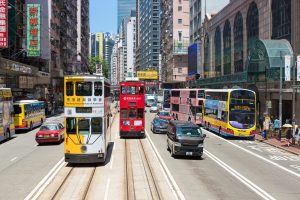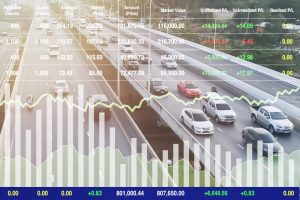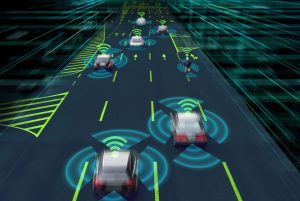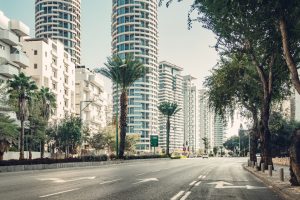While I hesitate to make this a personal matter, my father, who is in his late 70s, has recently become aware of deterioration in his eyesight and field of vision, and he seems to be losing confidence in his ability to drive.
My parents live in the suburbs of the Tokyo metropolitan area, where they are relatively well served by public transportation. So, even if they were unable to drive, they wouldn’t have any immediate issues with shopping, going to the hospital, or going out for dinner with family or friends. The problem is when they need to get somewhere that is difficult to access by public transport. One of which is the golf driving range, which has been my father’s hobby for many years.
Many driving ranges in the suburbs of Tokyo are not within walking distance of a train station. Basically, they have large parking lots, seemingly based on the assumption that customers come by car.
My parents’ house is within walking distance of the nearest train station, so there is the option of taking connecting trains and local buses to the driving range. But while it may be possible to play golf, it is hard to imagine an elderly person with weak legs carrying a heavy golf bag and changing trains or buses. It is not realistic for an elderly person living on a pension to pay several thousand yen each way to take a taxi to and from the driving range.
There is a theory that happiness is proportional to the variety of distances and routes traveled. From this point of view, and speaking as a member of the family, I don’t have the heart to dismiss it as a mere hobby.
In the near future, what kind of mobility will exist to meet such needs for getting around, to fill this kind of gap that exists between driving around by car and traveling on existing public transportation such as trains and buses? And what are the challenges?
Electric scooters have recently become increasingly visible in Tokyo. In addition, I’m delighted to see the development of more and more new so-called micro-mobility devices, mobility tools like electric skateboards that are portable in terms of their size and weight, diversifying the options for transportation.
However, what we are discussing here is the need for the elderly to go to the driving range with their golf bags. What kind of mobility allows you to carry large bags when you are no longer confident in your ability to drive?
I was thinking about these things the other day when I had the opportunity to ride on a self-driving bus that is running in Sakai, Ibaraki Prefecture. The bus runs at a speed similar to that of a bicycle, so probably about 20kmh at most. It drives slowly through the city allowing you to take in things that you might miss when driving a car. I saw delicious looking restaurants in unexpected places as well as impressive looking buildings, creating for me, a first-time visitor in Sakai, something similar to the excitement of traveling around on a theme park ride or a sightseeing bus, even though there was no guide on board.
It was a travel experience that filled me with the excitement of hope and imagining how these kinds of vehicles could come into widespread use in various regions, how autonomous driving technology could solve the labor shortage faced by public transportation carriers, and how mobile services could meet the travel needs that public transportation and private cars struggle to meet, such as the movement of elderly people with golf bags that I mentioned above.
Of course, many challenges still remain. For example, the social implementation of autonomous driving on roads where traffic is heavy and average vehicle speed is high needs to be considered from a variety of angles, such as technical aspects, systemic aspects, and social acceptability. Also, establishing businesses in areas not served by existing public transportation cannot be done without using data to match supply with demand and improving operational efficiency.
On the other hand, there is something to be said for the charm that I described above of the unexpected new discoveries that can be made when traveling around slowly. Can’t we focus on the good points of speed AND slowness rather than speed OR slowness?
A growing number of the new town developments being built in Japan and around the world are incorporating, in addition to conventional roads for cars and pedestrians, the maintenance and planning of a third type of road that bear in mind the movement of bicycles and the like.
Dedicated lanes for neither cars nor pedestrians, but for speeds somewhere in between, that can make it possible for people who are in no hurry to reach their destination to travel and enjoy new discoveries along the way – can’t we say that making it possible to travel with such ease is a kind of diversity, a value of a mature society?
It goes without saying that reshaping the roads and changing the structure of a city is a colossal task. However, I’ve heard that even in major historic cities like Paris and Milan, the road networks are being significantly reviewed and new town planning is being pushed for that will create space for bicycles and pedestrians and large-scale expansion of green spaces.
Needless to say, services cannot be sustainable unless their feasibility as businesses can be ensured. On this point, charges and costs will be borne not just by passengers but also by the travel destinations that will cooperate as beneficiaries. And as I mentioned above, it is also necessary to use data to match destinations and routes with multiple passengers and optimize operating routes, and these kinds of studies and service demonstrations are being implemented in various places.
If there is a causal relationship between the number of people moving or novelty value and the feeling of wellbeing, might not the provision of diverse mobility that can meet the needs of elderly people who want to go to the driving range without relying on a car, mobility that is fine-tuned to fill the gap between private cars and public transport, or slow mobility that brings unexpected new discoveries through leisurely travel, help add to people’s happiness?
Due to the Covid 19 pandemic, people have greatly reduced the amount and frequency of their travel. I myself am acutely aware of the effects of doing what I can remotely, and I am also enjoying the benefits of doing so. That’s why, in times like these, it is even more necessary to discuss what kind of travel is really necessary for people’s wellbeing and what challenges stand in the way of its realization.












